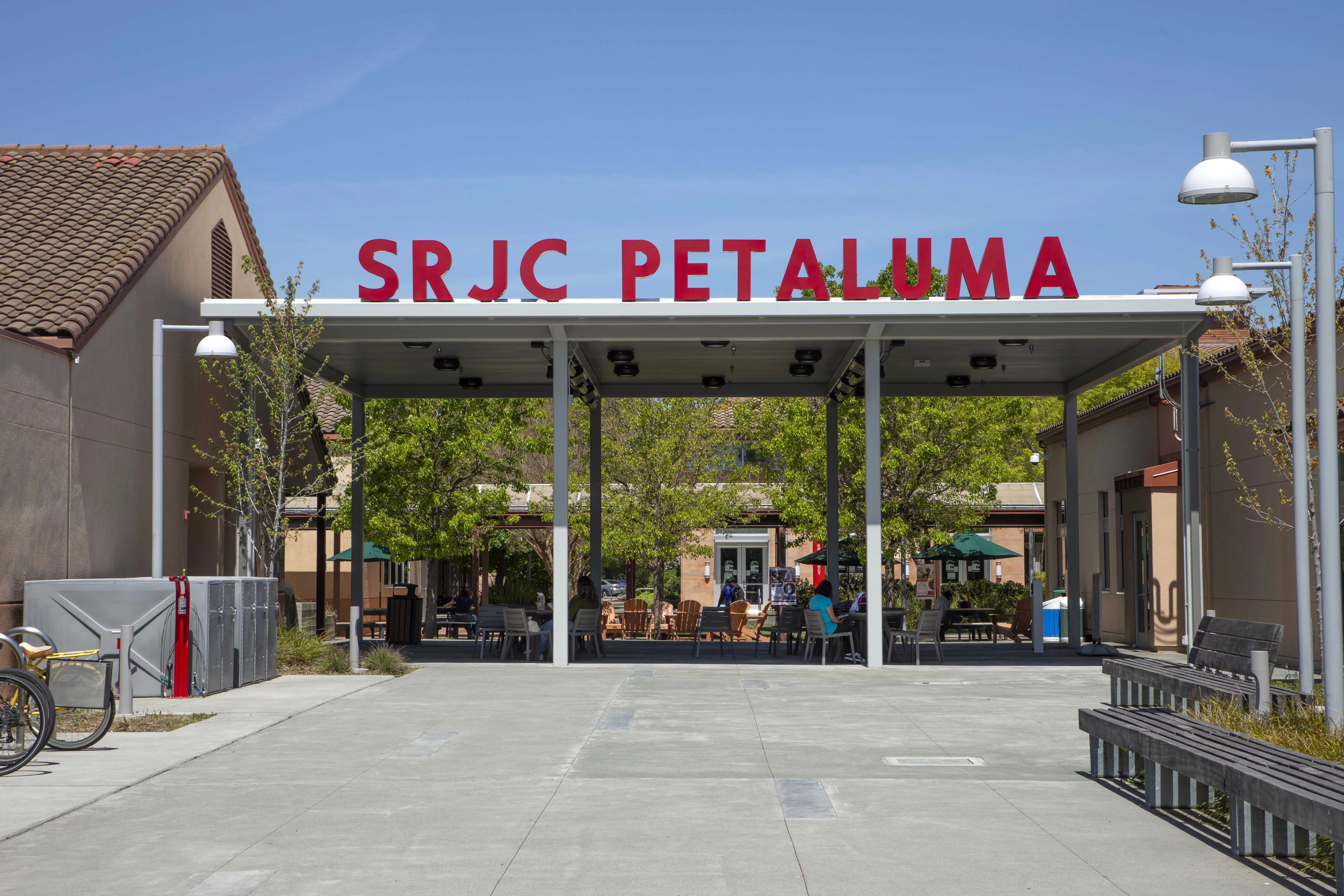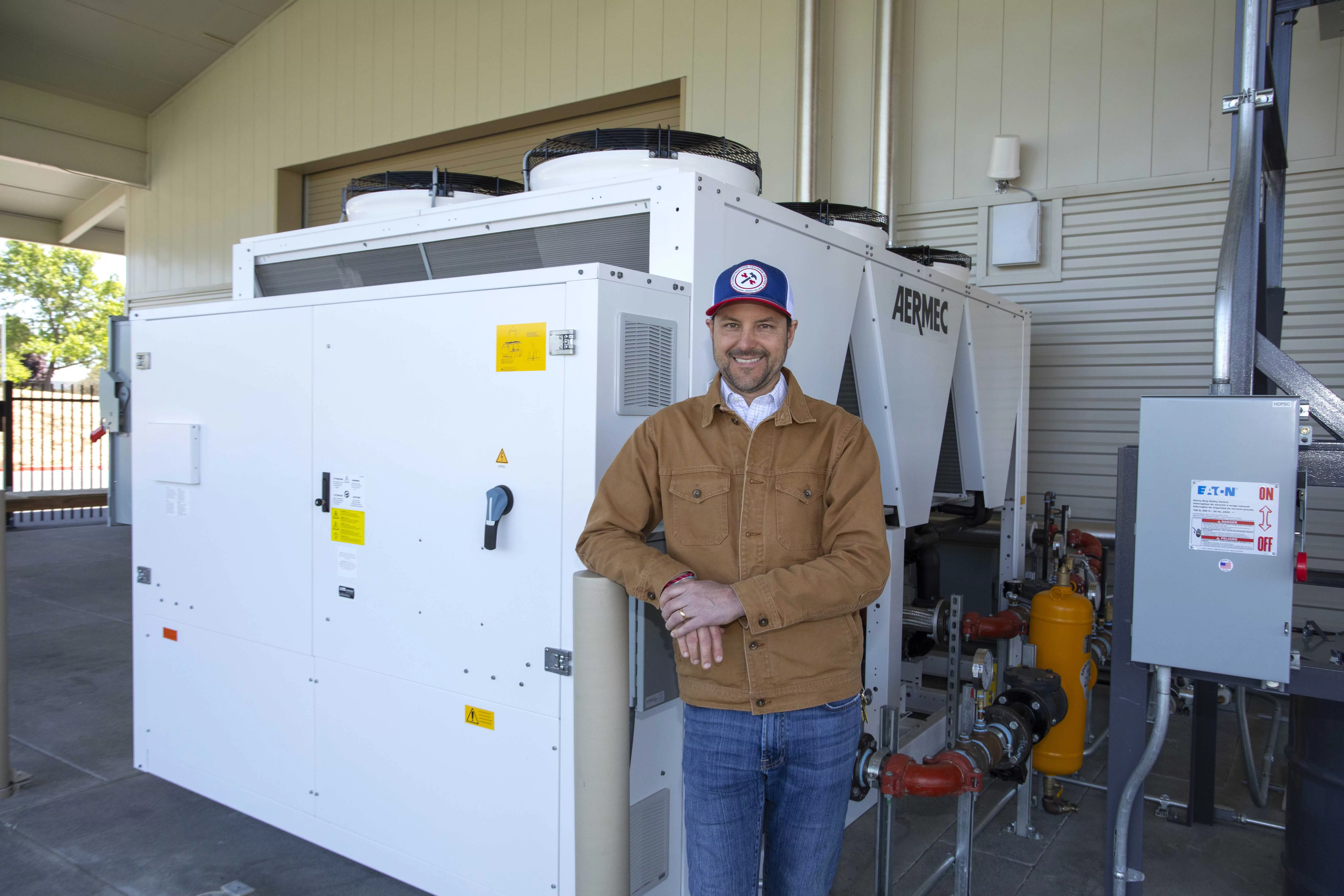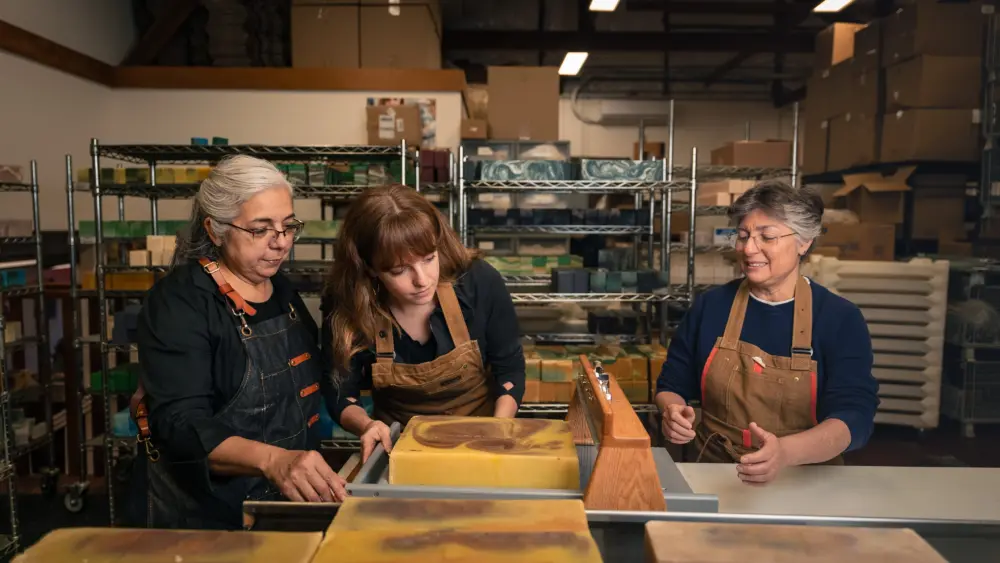
Santa Rosa Junior College's Construction Training Center in Petaluma is set to open for carpentry classes in time for the fall 2024 semester. [Duncan Garrett Photography]
The construction industry has a hiring crisis. Its aging workforce is stepping down, with 30% of workers at or nearing retirement. “For every five construction workers who retire, only one new hire is taking their place,” says Nicollette Weinzveg, director of workforce development and education for North Coast Builders Exchange. “That’s a nationwide statistic, but we are also hearing it anecdotally locally.”
Fortunately, there are several programs in the North Bay that are graduating hundreds of students in the construction trades to fill the critical need for workers, and there are plenty of young people and others who are stepping up to enroll in these programs.

Weinzveg oversees the North Bay Construction Corps, a construction training program started by North Coast Builders Exchange in 2017. North Bay Construction Corps (NBCC) is an eight-week course that meets on Saturdays for eight hours of hands-on experience. High school students receive a well-rounded, intensive course in the trades, learning electrical and plumbing skills, concrete work, heavy equipment operation and more. They also get certifications in CPR and the use of power tools.
Because college is not an option or a goal for many high school students, the training is increasingly popular with young people eager to learn a trade that pays well in a reasonable amount of time. “The stigma around not attending college is starting to go away,” says Weinzveg. “North Bay Construction Corps has graduated more than 200 students since 2017, even with the pandemic pause. The program has a very high graduation rate of 90%, and that’s higher than the graduation rate among our local high schools.”
She says the program graduated 75 students in 2023, compared to just 36 in 2022. “Through some really targeted outreach to our high schools, we have doubled our numbers, and this year we have 82 students in the program.”

Upon graduation, students may end up with jobs that are paid through a company, with starting wages at $18 to $20 per hour. Through their employers they get not only hands-on trade experience, but they also get exposed to the entire company and become familiar with how the office works, how to conduct project estimations, learn about human resources, and so on.
“We are also committed to teaching these students soft skills such as being reliable, showing up for work on time, how to communicate effectively, writing resumes and polishing interview skills,” says Weinzveg. “A session is also given on how to read a set of construction plans and the understanding of construction math. For their overall financial literacy education, we also explain the importance of banking and the responsible use of credit cards.”
Virtually all high schools in Sonoma County participate in the program, including some alternative schools and private schools. After a hiatus for the pandemic, the program was restarted in Mendocino County last year when state Sen. Mike McGuire procured $1 million in workforce development funds to expand the program to offer instruction in the inland county as well as on the coast.
NBCC is not funded indefinitely, adds Weinzveg, but the builders exchange is committed to keeping it going for many years to come. Donations from the more than 900 members of NCBE in Sonoma, Lake, Mendocino and Napa counties account for much of the funding. “They are investing in this program to reach students in our communities. And after students graduate, they are employed by many of our member companies. We also rely on county funds and private donations, and are continually searching for opportunities to grow the program.”
North Bay Construction Corps is dependent on industry participation, “and it is successful because of the amount of time and care our partners are devoting to it,” she adds. “We couldn’t do this without them. They are willing to spend their time and are committed to mentoring these students. Because of the hands-on instruction from our skilled partners, we are always on the lookout for new industry partners to add to the program. We have a great group of industry participants who come back year after year, but there will always be a need for more.”
NextGen Trades Academy
When called to talk about NextGen Trades Academy, Letitia Hanke answered her phone at Elsie Allen High School, where she was participating in a NextGen class attended by 15 youths. Hanke is chief executive officer of ARS Roofing in Santa Rosa and founder of the Lime Foundation, a nonprofit that started the academy in 2017 to provide vocational training to young people.
“What a lot of youth and people of color don’t realize is they can walk into being an electrician or a carpenter fairly easily after receiving the necessary training,” says Hanke. “I’ve been a roofer for 20 years. I’m brown skinned and I look like them, so I say to them, ‘Hey, you can be the CEO of your own company, too.’”
The academy is free to the students—the cost is covered by the Lime Foundation through donations specifically for the NextGen program. Hanke says 5% of each roofing job performed by her company also goes to the foundation to fund the program.
“I’ve been a roofer for 20 years. I’m brown skinned and I look like them, so I say to them, ‘Hey, you can be the CEO of your own company, too.'”—Letitia Hanke
NextGen conducts eight classes year-round, mostly at local high schools. Students learn a variety of skills, such as the use of tools, safety on the job site, resume and interviewing techniques and many others. The classes consist of two weekday sessions and full-day Saturday sessions for three weeks. A free set of tools is awarded to the students when they finish the course. More than 247 graduates have taken the classes—11% of them female.

“We conduct an all-female class once a year because there is a shortage of women in the trades,” says Hanke. “The reason we started this was because we would have a class of 25 youths ready to go and there was only one female in the group. We didn’t want them to drop out, so the all-female class is taught by all-women contractors and speakers so that young women can find out what it’s like to be part of the construction industry.”
Currently, NextGen is available for Marin County youths via Zoom classes. “We are in the process of starting an in-person class, but the cost is expensive. So we are negotiating to conduct a class in Marin in October with 20 to 25 students that would be a hybrid of Zoom and in-person instruction.”
“We conduct an all-female class once a year because there is a shortage of women in the trades.”—Letitia Hanke
Even with all the many construction training programs out there, she adds, they can’t accommodate all the students available who want to take the classes. “Our focus is on the 16 to 24 age group in underserved and at-risk communities. There are programs that provide the education part, but the one part they don’t do is give them a job. We introduce the students to the trades and also to the owners and CEOs of companies, and they hear real-world insights straight from them. We also want to keep classes from becoming too large so we can give everyone special attention.”
Hanke is always seeking mentors and volunteers to teach the NextGen classes, and she’s hoping that contractors who are looking to hire apprentices they are willing to train will reach out. “They can be large or small companies, it doesn’t matter. We have some great candidates for them to talk to.”
SRJC Construction Training Center
Though it was a little late getting off the ground initially, the new Santa Rosa Junior College Construction Training Center opens its doors in August for classes in carpentry. Located on the SRJC Petaluma campus, the 10,000-square-foot building is divided into three sections and will house carpentry labs to start, followed by a residential HVAC program that will come online next January.
Ultimately, the new training center is likely to graduate up to 500 students per year in all the classes offered there once all the programs are up and running.
The building of the center came in under budget and on time, says Benjamin Goldstein, dean of the Construction Training Center. “The total construction cost was a combination of federal grants and local match monies. The Economic Development Administration awarded more than $11 million, and we had a nonfederal matching share of nearly $1.6 million. Construction alone was close to $10 million, but the total project budget is about $12.7 million, to account for all the new equipment for the classrooms.”

There are lots of jobs available in framing, he says, so the college is hoping to attract anyone interested in learning the skill. “Framing and rough carpentry is the first step in building a house—it’s the foundation of all new construction.” Students in the four-part carpentry course will receive a fundamentals certificate in OSHA regulations, tools and safety, followed by hands-on experience in two carpentry classes. In total it’s a three-semester-long program lasting 17 weeks. It’s not required to be a high school graduate, but students must be at least 18, and all ages are accepted. Registration for the carpentry program opened in April.
The carpentry classes are a noncredit program. “It’s still college, but there are no transferable credits. It’s a completely free program that is pass/fail competency based. From the moment the students step in the door to graduation 18 months later, there is no cost to them and no homework,” says Goldstein.
The goal, he says, is to eventually conduct classes in both English and Spanish. “That’s for workforce equity, to meet students where they are linguistically.”
Registration opens in the fall for the HVAC course, which Goldstein says will use innovative software to teach theory and fundamental science in an online simulation environment, much like what fighter pilots and physicians use to learn complex procedures. Cost for the HVAC program will be $46 per unit, which is the standard statewide community college enrollment fee, and students will receive the full training for approximately $150. The HVAC program is open to all ages, and students must have a high school diploma or GED. Goldstein says he is actively seeking HVAC professionals to teach the classes.
“The local HVAC industry is starting to get excited about this because they are desperate for tradespeople,” he says. “They envision this new center as being a community hub for the local construction industry, eventually holding hiring fairs, trade shows, tool demonstrations and more in the space.”
Author
-

Jean Doppenberg is a lifelong journalist and the author of three guidebooks to Wine Country.
View all posts



